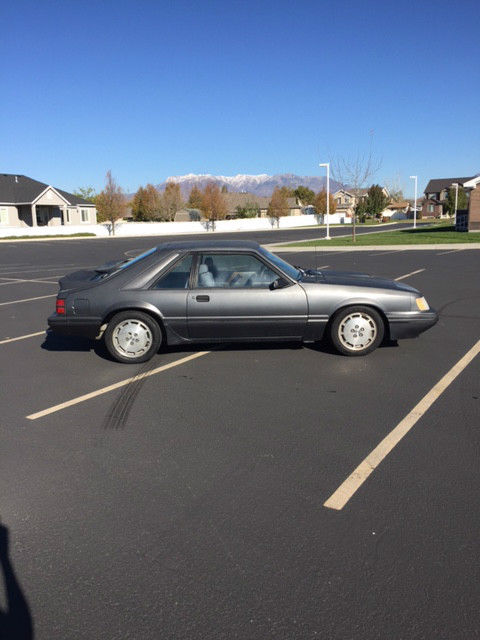1984 Ford Mustang SVO Hatchback 2-Door 2.3L
- Price:
- Condition: New
- Make: Ford
- Model: Mustang
- SubModel: SVO
- Type: Hatchback
- Trim: SVO Hatchback 2-Door
- Year: 1984
- Mileage: 138,213
- VIN: 1FABP28T7EF119477
- Color: Burgundy
- Engine size: 2.3L 140Cu. In. l4 GAS SOHC Turbocharged
- Number of cylinders: 4
- Fuel: Gasoline
- Transmission: Manual
- Drive type: RWD
- Interior color: Gray
- Safety options: Driver Airbag
- Options: Cassette Player
- Vehicle Title: Clear
- Location: Conyers, Georgia, United States
Description
1984 FORD MUSTANG SVO TURBO RARE( ONLY 4,258 MADE IN 1984 )
I HAVE OWNED THIS FOR 26 YEARS. THE ONLY THING THATS NOT ORIGINAL IS THE PAINT. THE CAR WAS PAINTED BACK TO THE ORIGINAL COLOR WITH A LITTLE EXTRA GLOSS. THERE IS ONE BAD SPOT ON THE PAINT AND COULD BE FIXED EASILY, ITS ON THE LOWER ROCKER PANLE ON THE PASSENGER SIDE. THE ONLY THING ON THE CAR THAT DOES NOT WORK IS THE AC. I BELIVE IT IS THE COMPRESSER. THIS CAR IS ONE OF MY PRIZE POSSESSIONS BUT I AM MOVING TO THE LAKE AND CAN NOT TAKE IT WITH ME. GOOD LUCK AND HAPPY BIDDING.
The Mustang SVO was a limited-production version of the Ford Mustang sold from 1984 to 1986, during which time it was the fastest, most expensive version of the Mustang available. Although it departed both physically and mechanically from any prior version of the Mustang, it held the same spot within the lineup, both in terms of performance over "lesser" variants and in prestige, as had variants such as the Shelby-tuned and "BOSS" Mustangs of the 1960s and 1970s.
History
In the wake of the oil crisis of the 1970s, the American muscle car had effectively died off, the result of rising fuel costs and the advent of more strict safety and emissions controls imposed worldwide. As a result, the "big three" automakers (Ford, General Motors, and Chrysler Corporation), for whom muscle cars had been a steady and reliable source of income, began to suffer somewhat financially. Many of the great vehicles of the muscle car era had been either completely discontinued or had been painstakingly detuned to help keep them in compliance with new federal emissions regulations and the rising demand for better gas mileage. The Mustang, although still in production, had suffered greatly through this time; diminished power output and Ford's seemingly complete inability to come up with an attractive body style in the postfastback era were major issues. The Mustang had also been considered to be replaced by a joint engineering effort with Mazda, but Mustang enthusiasts protested, and the car that had been prepared to replace the Mustang was eventually introduced as the Ford Probe.
Ford began to make a major push forward with the Mustang in 1982, nearly completely reinventing every aspect of the vehicle, which included putting a new emphasis on the model's sporty nature. Just prior to this, in the fall of 1981, Ford decided to form a division that could oversee both the company's racing program and the production of limited-edition, high-performance, street-legal vehicles based on or taking technology from the race vehicles. Officially, the division was called the Special Vehicle Operations Department, but the public came to know them as simply SVO (S-V-O). Tasked with developing something that was both plainly American and competent to compete with entry-level European sports cars of the day, the team went to work on the new Mustang, deeming that it was the most obvious choice as a platform basis for a high-performance vehicle.
Turbocharged powerStill ultimately concerned with issues such as fuel consumption and emissions, SVO engineers opted to pass over the venerable production 5.0 liter V-8 in lieu of an updated, turbocharged, and stronger version of Ford's 2.3 liter inline four, originally used in the Pinto and Ford Mustang II. The installation of the four-cylinder engine helped with weight distribution, due to the engine being installed perpendicular to the front axle, thereby improving handling. Endowing the engine with an advanced, computer-controlled fuel injection system and an intercooled turbocharger system helped push power output to 175 horsepower, fairly high for the time. In addition, a "fuel grade" switch was added to the dash, allowing the driver to adjust the vehicle's performance level depending on whether premium or standard grade fuel were being used, as the engine was not installed with a knock sensor. A factory-installed Hurst shifter was made standard to improve feel and quickness. With fine tuning and the addition of a new water-cooling system, power output rose to 200 horsepower (149kW) for 1986 (205 horsepower (153kW) for 439 85.5 SVOs). Also, the 1986 SVO had new "aero" headlights. These headlights were designed for the 1984 model, but regulations would not allow them to be used until the mid-1985 update. The vehicle's standard Borg-Warner five-speed manual transmission was updated then, as well, receiving revised gearing to match the new 3:73 rear end ratio,
| 1984 | 175hp (130kW) @ 4400rpm | 210lb·ft (280N·m) @ 3000rpm |
 1984 Ford Mustang GT-350 20th Anniversary 5.0l Hatchback 5 Speed Sunroof
1984 Ford Mustang GT-350 20th Anniversary 5.0l Hatchback 5 Speed Sunroof
Mileage: 61,453
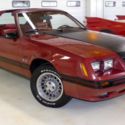 1984 Ford Mustang GT 24804 Miles Burgundy/Maroon Hatchback V8 5L Manual 5-Speed
1984 Ford Mustang GT 24804 Miles Burgundy/Maroon Hatchback V8 5L Manual 5-Speed
Mileage: 24804
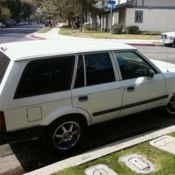 1984 Ford Escort GL 4 Door Hatchback Wagon White, Good Condition, Very Rare
1984 Ford Escort GL 4 Door Hatchback Wagon White, Good Condition, Very Rare
Mileage: 212,144
 1984 Ford Mustang GT350 20th Anniversary Edition (RARE) White Hatchback 8 Manual
1984 Ford Mustang GT350 20th Anniversary Edition (RARE) White Hatchback 8 Manual
Mileage: 39,134
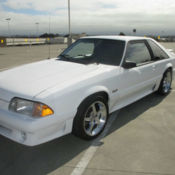 1990 Ford Mustang GT Hatchback 2-Door 5.0L
1990 Ford Mustang GT Hatchback 2-Door 5.0L
Mileage: 49,224
 1991 Ford Mustang GT Hatchback 2-Door 5.0L
1991 Ford Mustang GT Hatchback 2-Door 5.0L
Mileage: 87,000
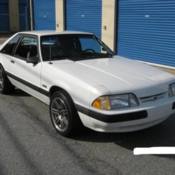 1991 Ford Mustang LX Hatchback 2-Door 5.0L
1991 Ford Mustang LX Hatchback 2-Door 5.0L
Mileage: 45,893
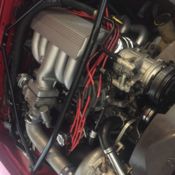 1990 Ford Mustang LX Hatchback 2-Door 5.0L
1990 Ford Mustang LX Hatchback 2-Door 5.0L
Mileage: 15,700
 1989 Ford Mustang GT Hatchback 2-Door 5.0L
1989 Ford Mustang GT Hatchback 2-Door 5.0L
Mileage: 24,000
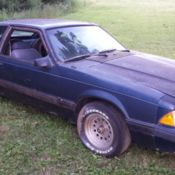 1987 Ford Mustang LX Hatchback 2-Door 2.3L
1987 Ford Mustang LX Hatchback 2-Door 2.3L
Mileage: 143,670




